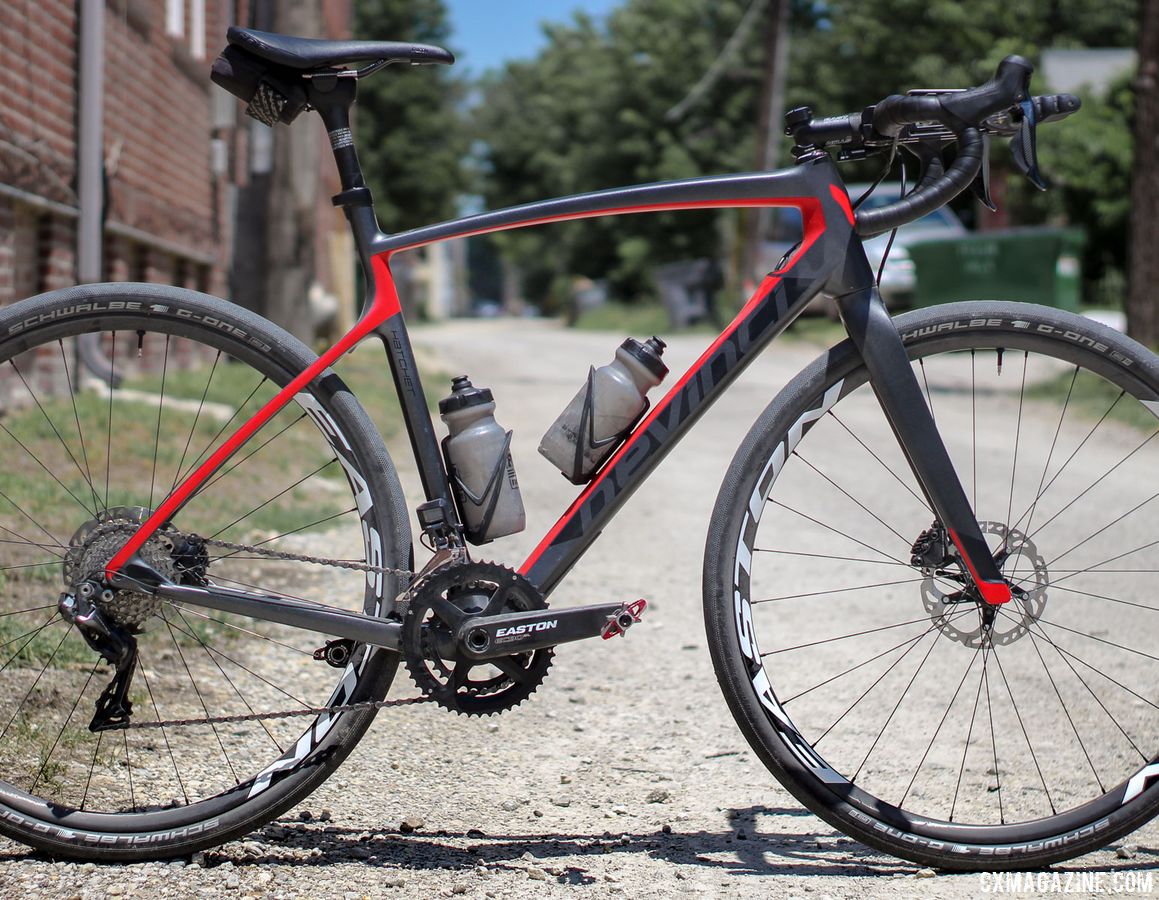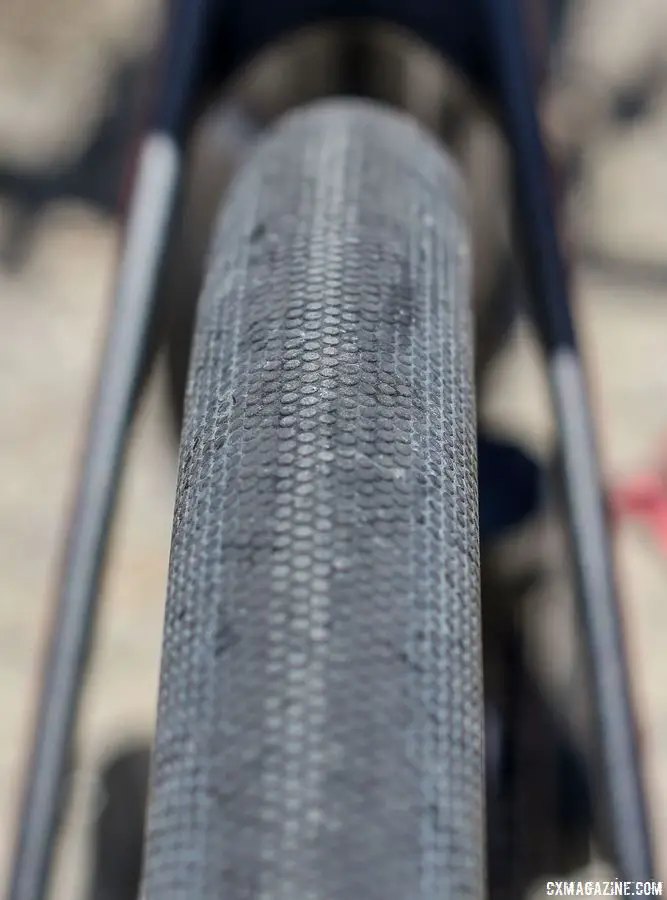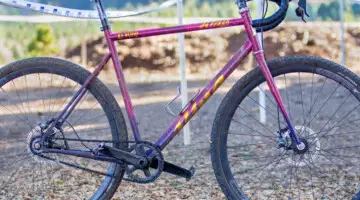The Garneau-Easton duo of Michael van den Ham and Craig Richey has been busy this spring racing on gravel roads across Canada and the U.S. At the races close to their homes near Vancouver, the two have gone 1-2 a couple times, taking turns on the top step of the podium in each of the races and seemingly having fun while doing so.
The Garneau-sponsored duo rides the Garneau Steeple during cyclocross season, but they are both trying gravel-specific models during their gravel exploits. Richey's bike of choice for his gravel racing has been the Hatchet gravel race bike made by Canadian company Devinci (although Richey may feel the bike is a masterpiece, it's not to be confused with Leonardo Da Vinci or his Code).
"Easton has a good relationship with Devinci," Richey said about why he rides the Hatchet. "[Easton] sponsors their enduro team on the mountain bike side, so there’s a good working relationship there. I like their bikes. I ride their mountain bikes too."
A spring of gravel was just a prelude to the grand daddy of the gravel races: the Dirty Kanza 200 held last weekend in Emporia, KS. Richey brought his Hatchet to Kansas to take on the impressive field starting the Dirty Kanza 200 this year. Richey fared well against the tough field, finishing seventh after spending 11:32 out on the course.
During the notoriously hard ride, he also made a new directions-giving friend.
https://www.instagram.com/p/BjkO1sMBu4T/?taken-by=craigrichey
Aero bars got their fair share of attention before the race, and Richey decided to join the party with a set that he MacGyvered to fit his needs during the long day out on the course. "I initially didn’t want to run aero bars, but I could definitely see the benefits of being able to keep a more aerodynamic position and have a different hand position," Richey said about his decision of Friday.
After the race, updated his aero bar thoughts, "I never touched them for the first 80 miles and was extremely grateful I had them when I cracked and was dropped from the leaders soon after the second checkpoint and was faced with the sad reality of potentially riding nearly 100 miles alone mostly into a headwind."
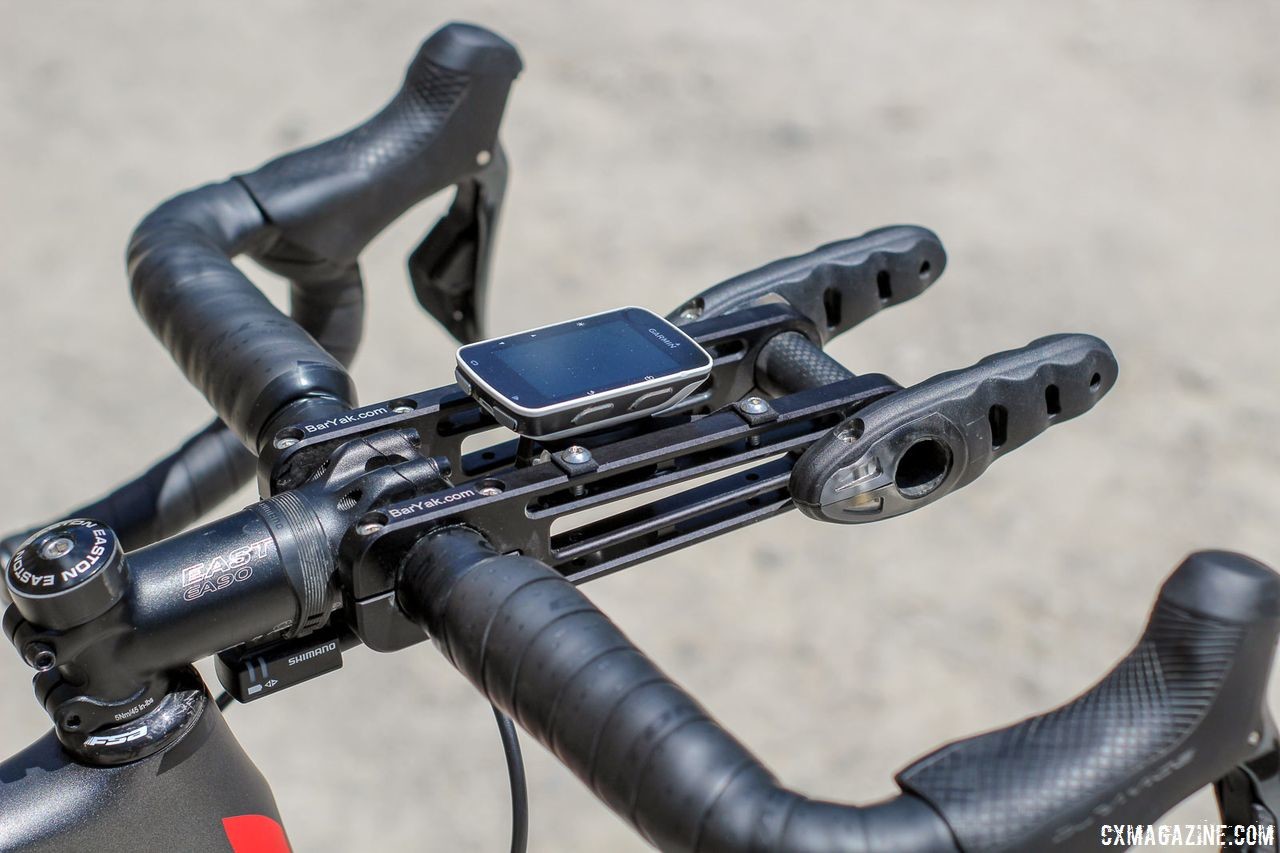
Richey crafted his own aero bars using bar rails from BarYak. Craig Richey's 2018 Dirty Kanza 200 Devinci Hatchet. © Z. Schuster / Cyclocross Magazine
Read on for a profile of Richey's bike and more about his DIY DK200 aero bars that helped him cut into the wind during the last leg of the course that went straight into a strong headwind.
Taking a Hatchet to the Wind at the DK200
Quebec-based Devinci has a long history of making race bikes. Founded in 1987 as a mountain bike company named Da Vinci, the company quickly added road to its repertoire when Felix Gauthier joined the company and convinced the team to change the name to Devinci.
Several years ago, Devinci jumped into the gravel game with the Hatchet, which we reviewed two years ago. The Hatchet comes in both carbon and aluminum builds, and not surprisingly, Richey was riding the carbon frame at the DK200.
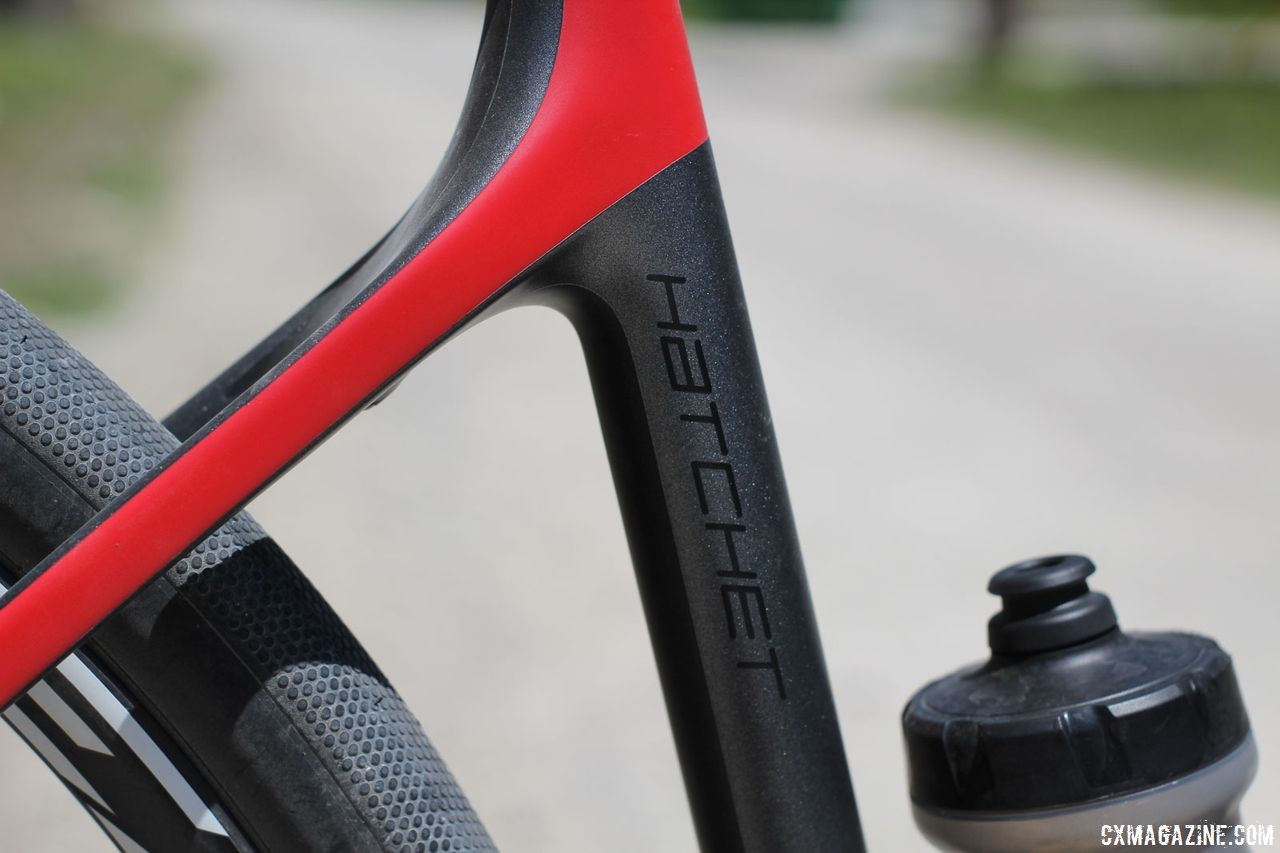
The Hatchet is Devinci's gravel race bike. The company makes the frame from its Dual Core Fusion carbon. Craig Richey's 2018 Dirty Kanza 200 Devinci Hatchet. © Z. Schuster / Cyclocross Magazine
Devinci builds the Hatchet frame with what it calls its Dual Core Fusion carbon. The layup is lighter and more compliant on top and stiffer for better impact resistance on the bottom. With the notorious Flint Hills gravel taking its toll on other riders, Richey was likely grateful for the extra frame protection as the gravel flew in the lead group he stuck with for the first half of the race.
Richey rode a 57cm Large frame at Dirty Kanza. Getting to that size took some trial and error. "I had the Hatchet when it launched, the size down, the medium," Richey said. "When I bought it the guys at Devinci said to get the large, and I said no because the head tube was too big. I was wrong, it was too small."
Devinci designed the Hatchet as a gravel race bike, and the geometry adopts the slacker front end, longer wheelbase approach to gravel bikes (as opposed to an "all-road" geometry that is similar to a road bike). Richey's 57cm frame has a 71-degree head tube angle and 43.5cm chainstay that help produce a long 105.6cm wheelbase. The bottom bracket drop is 7cm, which is similar to many other gravel bikes. The geometry also includes a longer head tube and shorter stem, similar to what we saw with Kaitie Keough and Ted King's winning Cannondale SuperX bikes.
"I like that the Hatchet has a less-steep head angle than some other bikes and a low bottom bracket, so it’s pretty stable" Richey said about his bike. "Long rear end, good tire clearance."
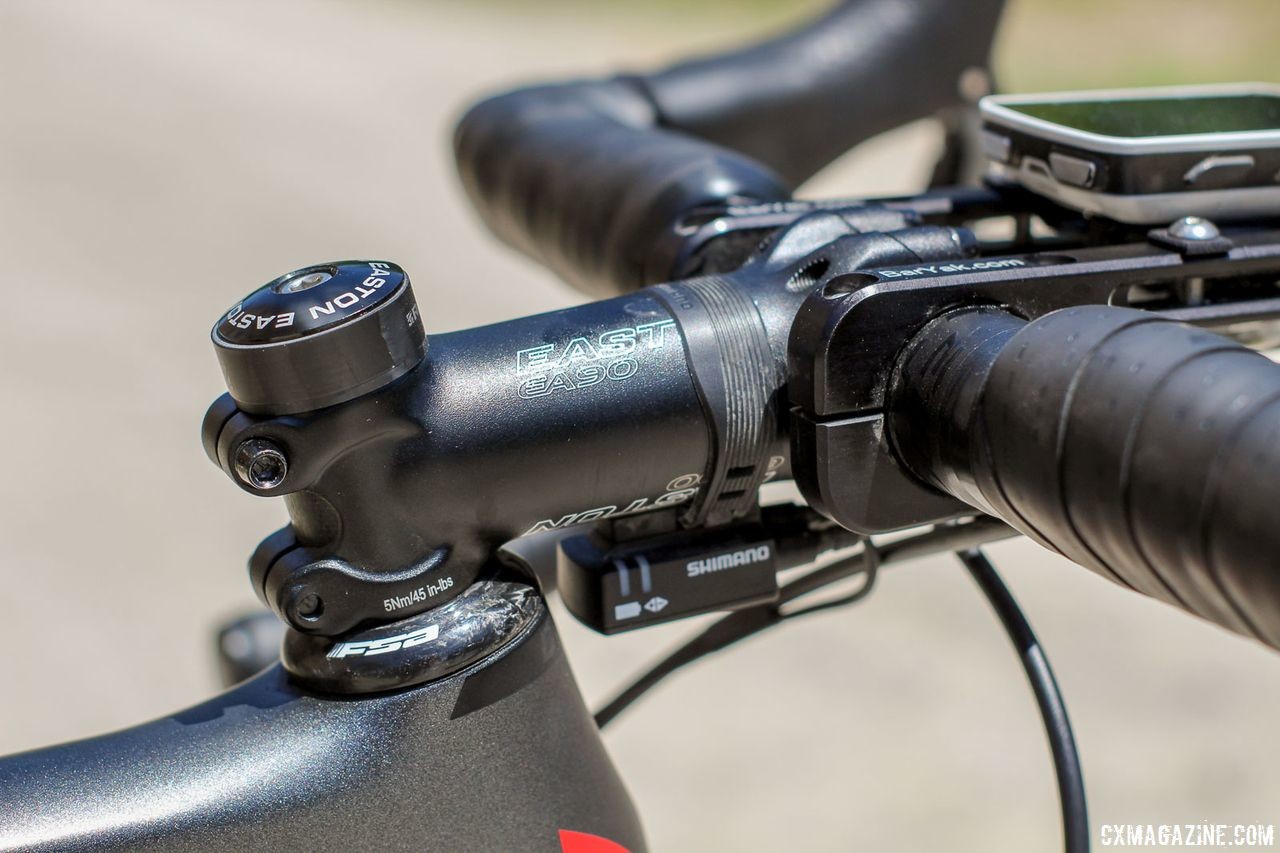
As an Easton-sponsored rider, many of Richey's components were Easton. Here, his Di2 junction box attached to an EC90SL stem. Craig Richey's 2018 Dirty Kanza 200 Devinci Hatchet. © Z. Schuster / Cyclocross Magazine
The fork and downtube have internal cable routing. The downtube features an "intake port" with swappable grommets to accommodate cables for mechanical and electronic shifting, hydro and mechanical brakes and even a dropper post. Richey had his bike equipped with Di2 shifting, hydraulic brakes and no dropper.
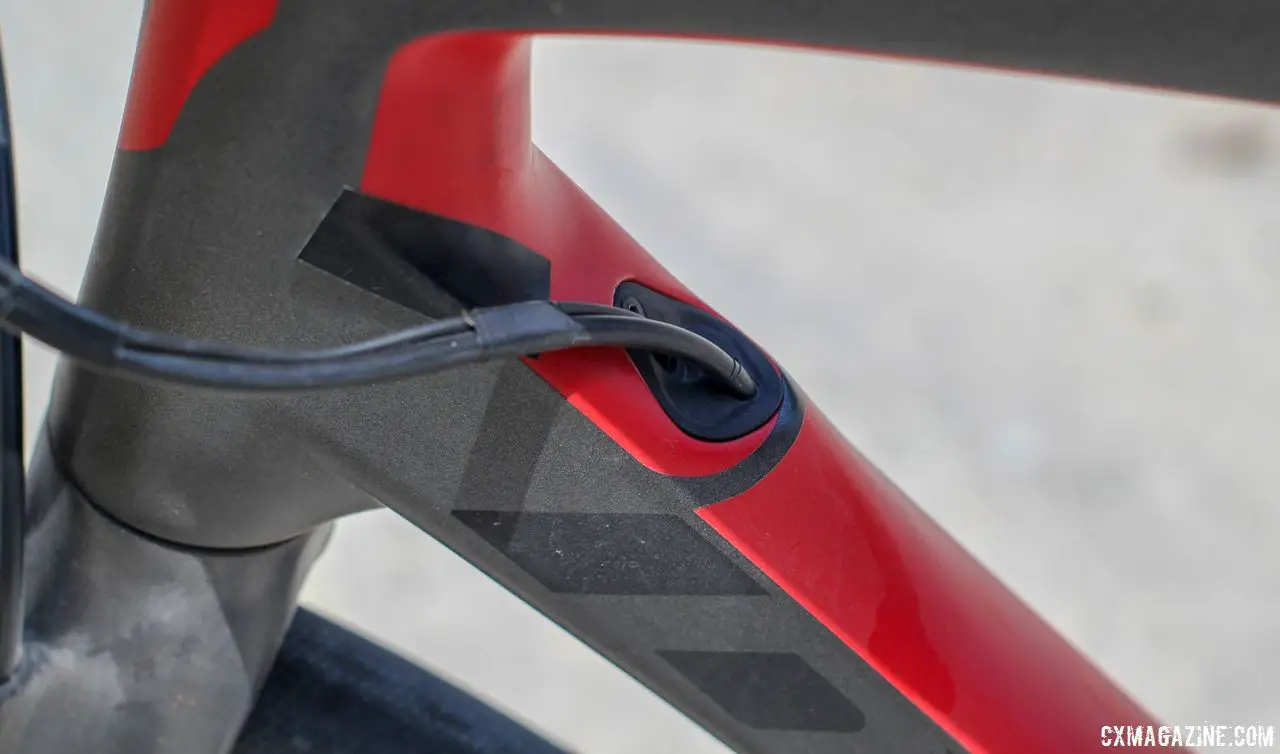
The "intake port" on the Hatchet has adjustable caps to fit different kinds of shifting and braking and even a dropper post. Craig Richey's 2018 Dirty Kanza 200 Devinci Hatchet. © Z. Schuster / Cyclocross Magazine
As a gravel bike, the Hatchet comes with clearance for wide tires. Richey ran 700c x 38mm Schwalbe G-One Speed TLE tires that feature a relatively smooth tread. The Microskin fabric layer is said by Schwalbe to offer extra protection, which also likely came in handy at the Dirty Kanza. The company claims a max tire clearance of 40mm, but after reviewing the bike, we felt it might be able to fit wider tires with low-profile treads.
Richey was strategic in his tire selection before the race. "They are supposed to be really puncture resistant and roll really fast," he said about the G-Ones. "I am rolling the dice a little bit. I could run a more chunky, conservative tire, but I’m maybe not 100% confident in my fitness, so I am going to take this speed advantage and hope I don’t flat." Richey not only did not flat, he also showed he had plenty of fitness with his seventh-place finish.
After surviving with the help of his stump friends, Richey talked about his tires during the race.
"The G-One Speed 38mm tires were a bit of a gamble considering the rain in the morning, and I was worried about traction in the mud but was able to tap my cyclocross background and rode everything including the very muddy section after checkpoint one. I was surprised how many tire risks people were taking during the race despite numerous riders flatting early on, I was generally careful on descents and picked lines to avoid loose rocks and potential punctures. I side wall sliced about 15 miles from checkpoint two, but my Orange Seal sealant sealed quickly and I lost less than 10 psi."
Not surprisingly, Easton components adorned much of the rest of his bike. He ran a prototype Easton carbon tubeless gravel wheelset that has an internal width of 24mm. Richey said the wheelset is similar to Easton's EA70 AX wheelset that is part of its gravel adventure line.
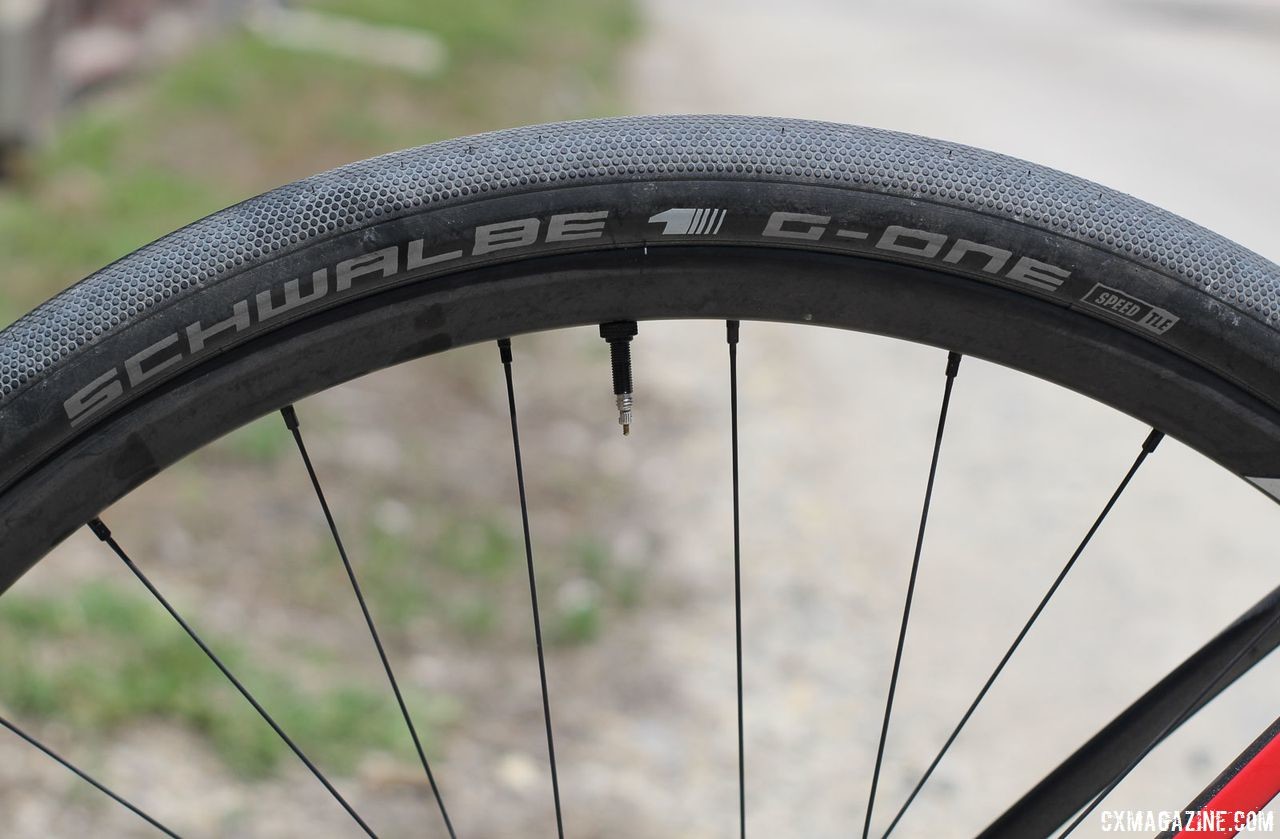
Richey ran Schwalbe G-One Speed tubeless tires with, not surprisingly, Easton wheels. His wheels were a 24mm internal width carbon tubeless gravel prototype. Craig Richey's 2018 Dirty Kanza 200 Devinci Hatchet. © Z. Schuster / Cyclocross Magazine
His crankset was an Easton EC90SL with Easton's new 47/32t Gravel Shift Rings. His front derailleur was a Dura-Ace R9150 Di2 model, and he ran the matching R9150 Dura-Ace rear derailleur. Richey did not use the new Ultegra RX clutch-based derailleur that we saw on Sven Nys' Checkpoint. His shift/brake levers were also Dura-Ace ST-R9170 and his calipers were Dura-Ace hydraulic disc.
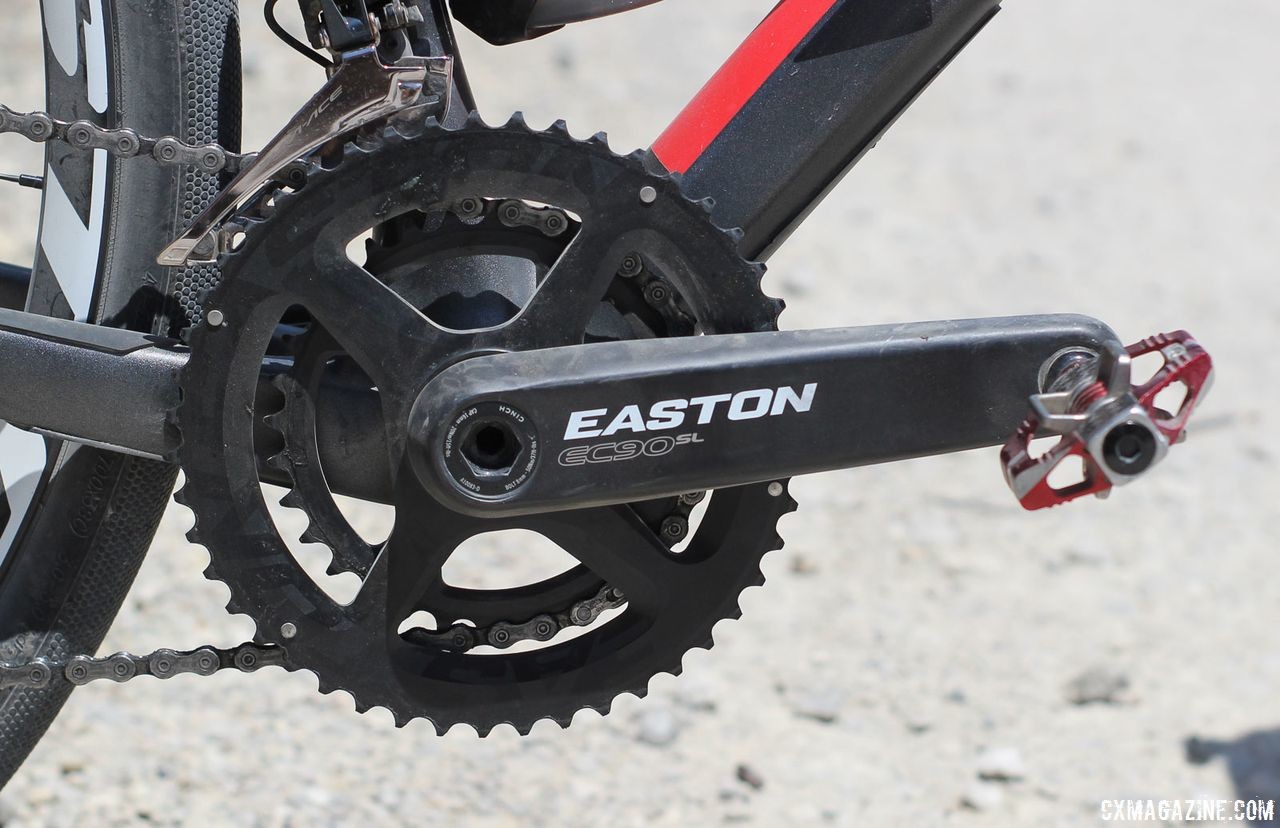
Richey ran Easton's new 47/32t Gravel Shift Rings with his EC90SL crankset. Craig Richey's 2018 Dirty Kanza 200 Devinci Hatchet. © Z. Schuster / Cyclocross Magazine
His other contact points were a SDG Falcon saddle, Crankbrothers Candy 7 pedals and an Easton E100 handlebar. The Hatchet comes stock with Easton's flared AX adventure bar, but Richey opted for the old-school road-bar without the flare.
Getting Aero in Kansas
If you've read this far, it means you likely want to know more about Richey's aero bars. After Geoff Kabush's op-ed stating he wouldn't do work for anyone using aero bars, the cycling commentariat was atwitter about the seemingly innocuous bar attachments before the race. Fortunately, as Richey's fellow Canadian, Kabush was very friendly about his stance, even while riding with the man who made gravel aero bars famous in Mat Stephens.
https://www.instagram.com/p/Bjnio09l4rt/?taken-by=geoffkabush
Richey also ran aero bars, but whereas others ran stock bars, Richey did some MacGyvering to create his DK200 setup.
"I initially designed and 3D-printed a different face plate that bolted on that had a Garmin mount you could grab onto," Richey said about his design process. "It ended up not working very well. I was worried about the bolts fatiguing and it was a bit sketchy."
The base for Richey's bars came from a company called BarYak, which makes bar packing systems for bikepacking setups. "Then I discovered BarYak," Richey said. "This is kind of a bike bag carrying device for bikepacking on mountain bikes. I got that and then experimented with different hand positions on that and ended up with mountain bike bar ends on that."
Richey started with BarYak's Expedition Bar Rails, which are made from aluminum and attach to standard handlebars. He connected the two rails with a Carbon Cross Bar from BarYak and then attached a pair of mountain bike bar ends to the Cross Bars. (This is not the first time we've seen mountain bike bar ends on a gravel bike this year).

Richey made his aero bars by attaching mountain bike bar ends to BarYak's Expedition Bar Rails. Craig Richey's 2018 Dirty Kanza 200 Devinci Hatchet. © Z. Schuster / Cyclocross Magazine
BarYak sells a Garmin mount extension, but Richey opted for a DIY approach. Richey 3D-printed his own Garmin mount that screws into the two ports on the bar rails and holds his head unit between the two for easy viewing while gravel grinding into the wind.
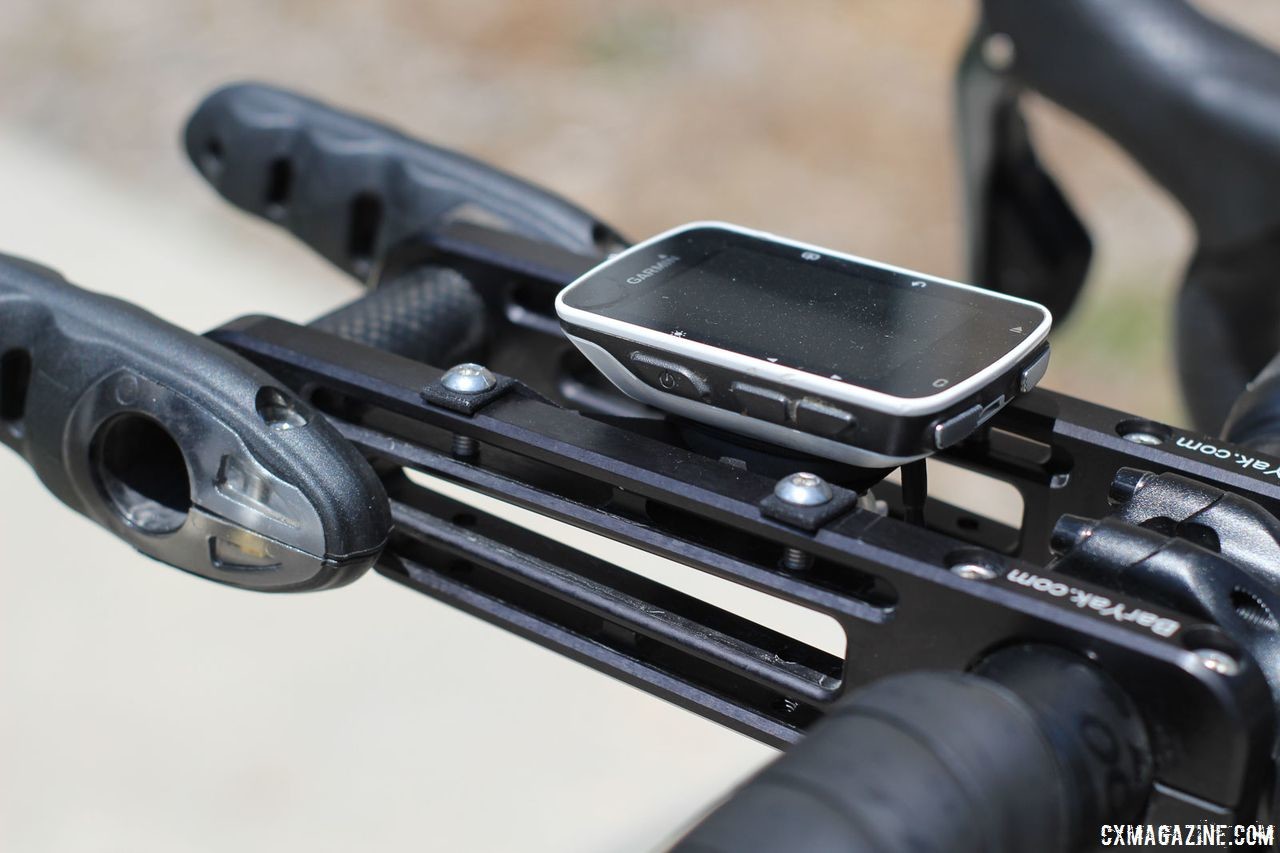
Richey fashioned his own mount to put his Garmin in good viewing position. Craig Richey's 2018 Dirty Kanza 200 Devinci Hatchet. © Z. Schuster / Cyclocross Magazine
The result was a unique, but effective platform for cutting into the brutal headwind that blew from the north during the last half of the 206-mile race. "This is a bit more minimalist," he said about his DIY creation. "I don’t know if it’s lighter than clip-ons, but it looks better."
After the race, Richey admitted looking better is relative. "Generally riders seemed careful when using aer obars in pack settings, and I saw fewer crashes than in any large mass start road event I have done, so I'm not sure if the safety argument is valid. Generally aero bars look lame in my opinion, and a rule banning them would simply end the debate and make it even for everyone." [Offer your thoughts on aero bars in our poll on rules in gravel.]
For a full look at Richey's aero bars and Devinci Hatchet gravel bike, see the photo gallery and specs below.
For more gravel bikes, see our profiles of Olivia Dillon's Specialized Diverge, Kaitie Keough and Ted King's Cannondale SuperXes, Sven Nys' Trek Checkpoint, Tobin Ortenblad's Santa Cruz Stigmata and Rowie Jaron's custom titanium bike from NTP Bikes. Stay tuned for more bike profiles from the Dirty Kanza 200 and Lost and Found Gravel Grinder.
For more from Kansas, see our Dirty Kanza 200 archives.













